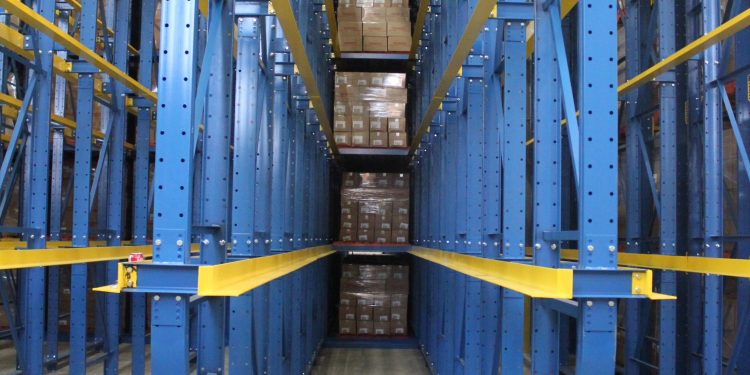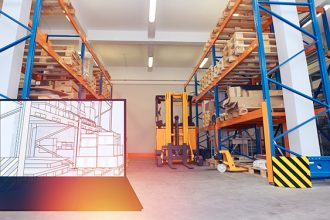Planning Your Rack System—Part Two: Drilling down into specific rack types to understand what works best for your operations

In part one of our post “Planning Your Rack System,” we explained the basic differences in racking materials, density versus selectivity, and more. In this post, we’ll explain more about the various racking configurations and how each might work in different types of operations.
We began defining the most basic types of rack in the first post, those being single- and double-deep selective racks. Now we’re going to move up the ladder of complexity, beginning with pushback racks. These are a system of carts and rails that users can configure as needed. The rails run front to back on a slope, and a series of carts rides on the rails. It’s a last-in, first-out (LIFO) operations, which can be a drawback in some situations, depending on your operation. Another drawback is that it is limited in how deep you can store your pallets, usually cutting off around six.
There are also drive-in and drive-through rack set ups, which are often—mistakenly—used interchangeably. For starters, drive-in racking is a LIFO set up, and drive-though is a FIFO (first in/first out) set up. In the case of drive in, you have the potential for high density, but operating within the configuration can be slow and more prone to damage from the lift trucks. In the case of drive through, if a FIFO set up makes more sense for your operations, it may be available to you, depending on your seismic zone.
As you get into more complex racking systems, you can look at pallet flow racks, pallet shuttle systems, and high-rise pallet storage—automated storage and retrieval systems (ASRS)—which become increasingly more automated. While the costs associated with these options gets increasingly higher, the advantages include higher density storage, higher heights, which utilize more of your available facility space, and faster operations. Downsides include the fact that once you have constructed systems like this, you lose some flexibility for the future.
In today’s retail landscape, which is increasingly reliant on ecommerce, your racking configurations must change with the times. Gone are the typical full pallet load picking operations and in is more case and each picking. This has a direct impact on which racking configurations you choose.
Many distribution centers assume this means automation in racking is a necessity, but that’s not necessarily the case. There are still lower cost options that can help you accommodate each picking.
This might include basic shelving, which is highly configurable via dividers, trays, and drawers. Costs are low, but drawbacks include the fact that you must load and unload from the same side, decreasing efficiency. The next step up is carton flow, a FIFO system of rollers on beams, which allows for simultaneous loading and unloading. You can also consider low-cost flex cell systems, which hang from beams and allow for a high SKU storage count in a small area.


